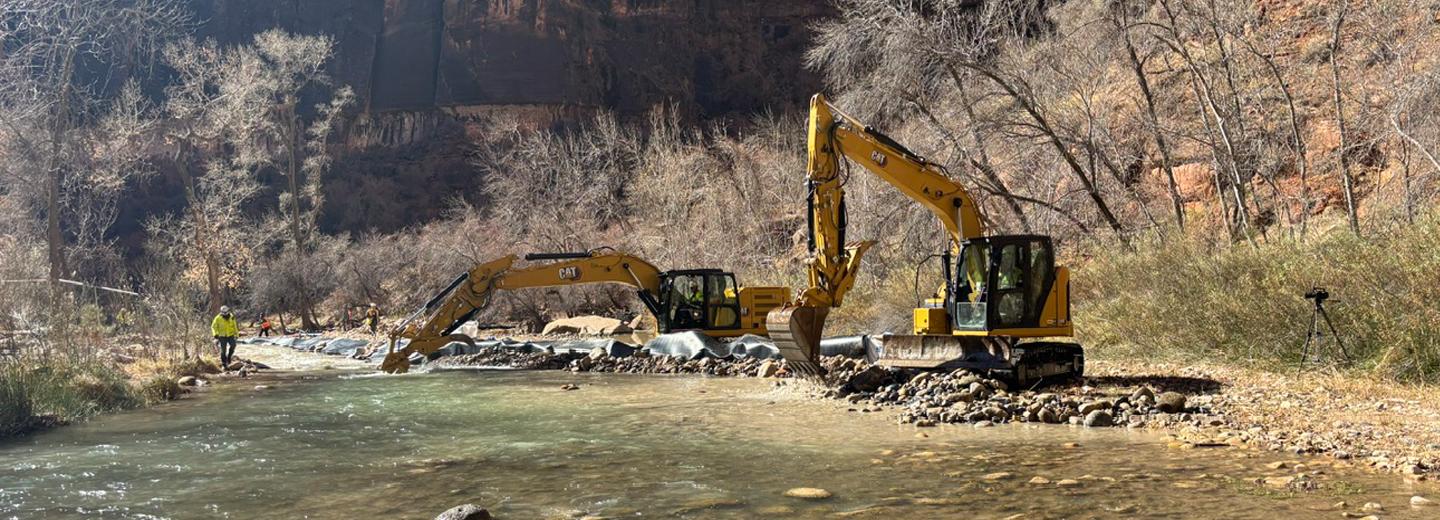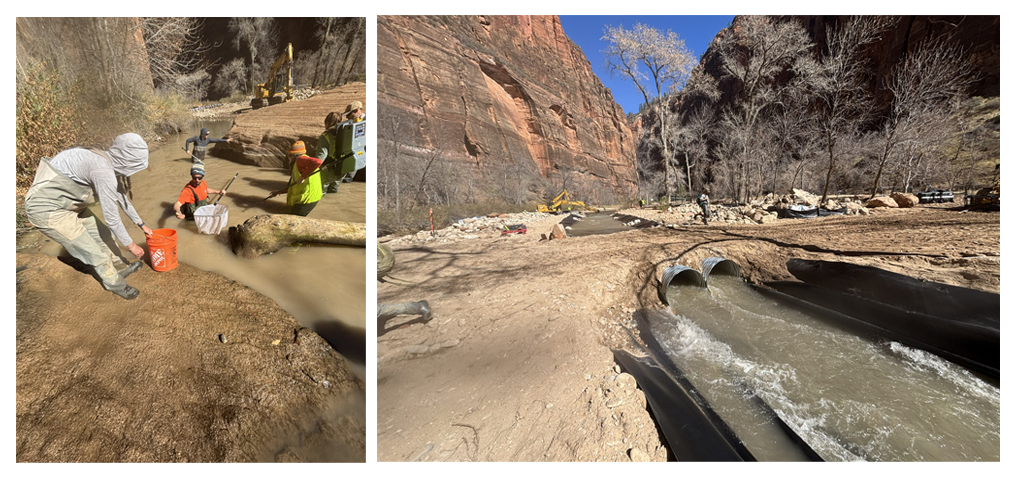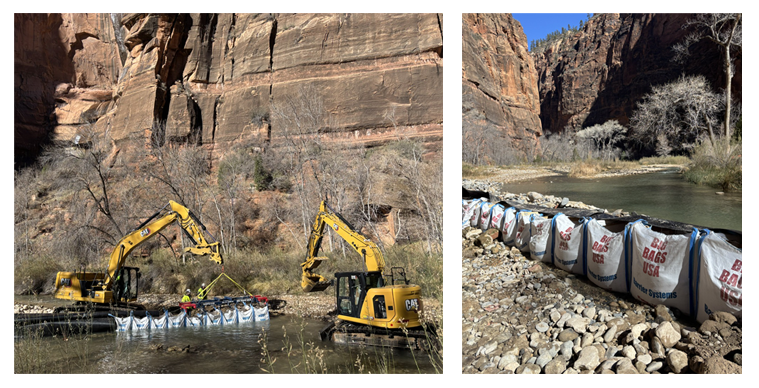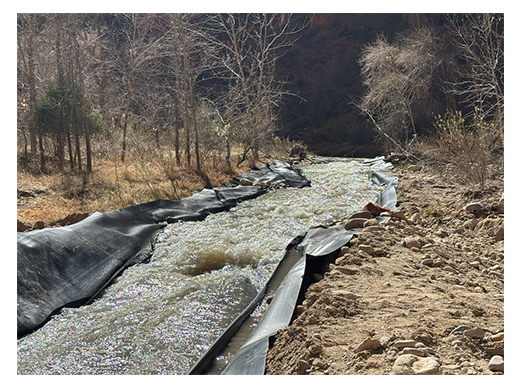
Dam Removal in Zion National Park
Southwest Utah’s Zion National Park is one of America’s wilderness gems. Having attracted nearly 5M visitors in 2024, it is second in popularity only to Great Smoky Mountains National Park in Tennessee. Recently, Granite was selected as a subcontractor for general contractor Wu & Associates to remove a dam in the park that has restricted protected fish species from accessing critical habitat.
The North Fork Virgin Wild and Scenic River originates at Cascade Falls, waters from Navajo Lake; it flows through Zion Canyon in Zion National Park. In 1957 a concrete dam was installed on the river near the Temple of Sinawava, a huge natural amphitheater carved by the river, to feed a waterline for the nearby restroom and water bottle refilling station.
More recently, federal biologists discovered that the dam was preventing the passage of fish species up and down the river. Through the use of tagged fish and antennas tracking their movement, it became clear that the dam was a major obstacle. As part of a program to rewild the river, the National Park Service (NPS) decided to remove the dam and install a new waterline below the riverbed to supply the restroom.
Granite’s scope of work included diverting the river and removing the dam, regrading 250 feet of the river channel, constructing four rock weirs across the channel to control the river grade, installing 60 feet of riprap armoring along the bank, placing dozens of habitat boulders throughout the project area to support the fish, as well as installing two 60-foot steel casings, one for the new waterline and the other for utility conduits.
The diversion consisted of a lined channel to prevent erosion. There was some concern about water overflowing the lining during a recent winter storm, but the diversion weathered the storm unharmed. The river was dammed with Big Bags USA products—essentially giant sandbags that were placed in a row and fronted with sheeting to create a temporary dam and enable the crew to access the riverbed.
Once the channel was empty, the crew discovered that the dam was larger and more robust than expected. Instead of the anticipated 5 × 5 × 50 feet, the structure was 5 × 5 × 85 feet and sat on a foundation of grouted riprap, requiring additional work to remove. The removal was handled by a Cat® 315 excavator with a hammer attachment for breakup and a Cat 320 excavator to remove the debris, which was hauled to an off-site aggregate facility and will be used to build roads in the park.

The final phase was constructing the rock weirs and placing the habitat boulders and steel casings. All work was required to be completed by April 1 so as not to inhibit the fish spawning season.
Project Engineer Layne Nusink explained the many challenges and benefits of working in the park. “We’re focused on keeping our footprint really minimal, especially with regard to the vegetation,” he says. “The scenery makes it really special. It is such a beautiful place, and this type of project is probably something you get to do just once in your career.”

In terms of challenges specific to the national park, Layne points to some of the considerations around wildlife: “When we got ready to build the temporary access road, there was a 24-hour period during which a team moved all the small mammals in the area. For the river itself, after we completed the temporary dam, wildlife professionals went to the ponded areas, shocked the fish to stun them, then moved them back into the river. Every day we see deer, turkeys, and other wildlife. We’ve even seen condors.”
Layne had only positive things to say about collaboration with the clients: “It’s been seamless. There is great communication among Granite, Wu & Associates, and the NPS. On the park side, this project is really the baby of NPS Physical Science Program Manager Robyn Henderek, who has been very present—she’s on-site basically every day to make sure things are going well. We can reach out directly to the president of Wu when necessary. Coordination and communication are both very good.”
The team is looking forward to wrapping up this truly unique project. “I’m proud of the crew,” says Layne. “Superintendent Brian Ashton, Operators Clay Chorn, Aaron Berg, and Roberto Ramirez—hats off to all of them and their team for doing great work on a project that will really have a positive impact in this stunning wilderness.”
